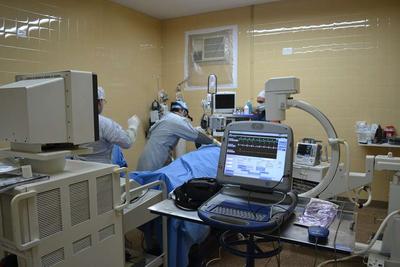- +86 196 0217 6777
- [email protected]
- Monday - Sunday 9.00 - 18.00
Pediatric minimally invasive therapy, also known as minimally invasive surgery (MIS) in children, offers several significant advantages compared to traditional open surgery. Here are some key benefits:

1.Minimal Scarring: One of the primary advantages of pediatric minimally invasive therapy is the smaller incisions required. Instead of a large surgical opening, MIS procedures involve tiny incisions, often less than a centimeter in length. As a result, children experience minimal scarring, which is especially beneficial for their growing bodies and self-esteem.
2.Reduced Pain and Discomfort: The smaller incisions in MIS result in reduced tissue trauma, leading to less postoperative pain and discomfort for pediatric patients. Minimizing pain helps children recover faster, reduces their reliance on pain medication, and allows for earlier mobility and return to regular activities.
3.Shorter Hospital Stay: Compared to traditional open surgery, minimally invasive procedures generally result in shorter hospital stays for pediatric patients. With MIS, children may be able to return home sooner, leading to a more comfortable and familiar environment for recovery. This shorter hospitalization period also reduces the risk of healthcare-associated infections.
4.Faster Recovery and Return to Normal Activities: Minimally invasive therapy allows for a quicker recovery compared to open surgery. Children can often resume their regular activities, including school and physical activities, in a shorter timeframe. This faster recovery enhances their quality of life and minimizes disruption to their academic and social routines.
5.Improved Cosmetic Outcome: The smaller incisions and resulting minimal scarring in MIS contribute to a more favorable cosmetic outcome. This is particularly important for pediatric patients who may feel self-conscious about visible scars. A better cosmetic result can positively impact a child's self-esteem and body image.
6.Decreased Blood Loss and Infection Risk: Minimally invasive techniques used in pediatric surgery are associated with reduced blood loss during the procedure. Additionally, the risk of surgical site infections is generally lower due to the smaller incisions and decreased exposure of internal tissues to external contaminants.
7.Enhanced Surgical Precision and Visualization: Minimally invasive instruments and technologies, such as laparoscopic cameras and specialized endoscopic tools, provide surgeons with improved visualization and magnification of the surgical site. This enhanced precision allows for more accurate and targeted procedures, reducing the risk of complications and optimizing surgical outcomes.
Pediatric minimally invasive therapy has revolutionized the field of pediatric surgery, offering numerous advantages over traditional open procedures. These benefits contribute to improved patient outcomes, faster recovery, and enhanced overall well-being for children undergoing surgical interventions.